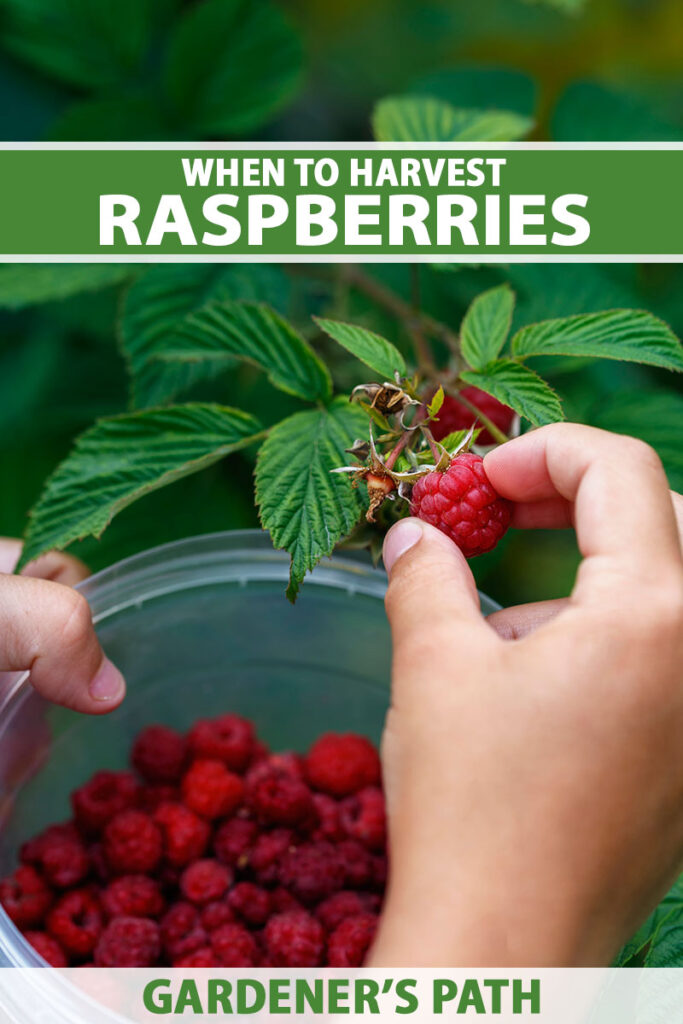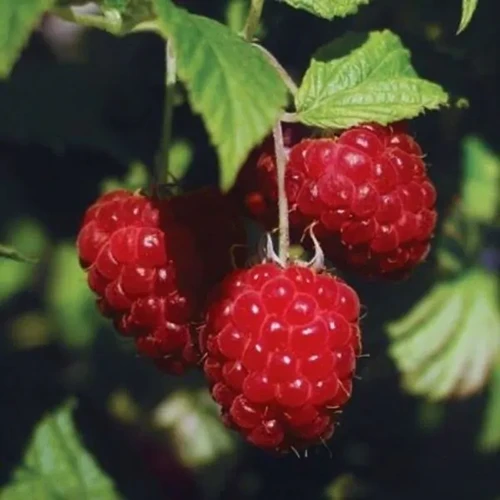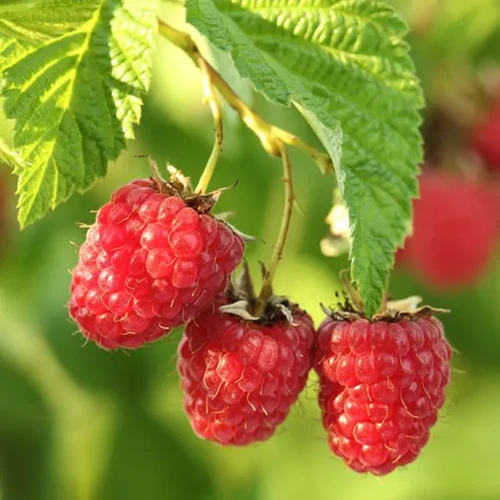Raspberries are fruits in the Rubus genus of the Rosaceae or rose family.
Whether black, golden, purple, or red, they are pleasantly tart summertime treats that are delicious out of hand, or used in recipes ranging from scones and tarts to ice creams and sorbets, preserves, and syrups.

We link to vendors to help you find relevant products. If you buy from one of our links, we may earn a commission.
Our guide to growing raspberries discusses everything you need to know to cultivate your crop.
This article focuses on one aspect of cultivation: picking.
Read on to learn when and how to harvest raspberries, consider some of our favorite cultivated varieties, and discover festive recipes to celebrate the harvest.
Here’s the lineup:
What You’ll Learn
Let’s head out to the berry patch!
Understanding Raspberry Growth Habits
Raspberries are soft, edible fruits with clusters of juice-filled, seeded drupes surrounding a stem portion called a torus or core. The plants have roots, crowns, and canes.
The roots are hidden underground and the crowns sit at soil level, where the roots and stems meet. Roots and crowns are perennial.

The canes are long, unbranched stems that live for two years. They range in height from three to nine feet, depending upon the species or cultivated variety.
There are two types: primocanes and floricanes.
Primocanes are soft, first-year stems that sprout in the spring.
Floricanes are woody second-year stems.
In addition, there are three types of raspberries:
- Summer-Bearing
- Fall-Bearing
- Everbearing
Summer-bearing types flower and fruit on floricanes from early to late summer.
Fall-bearing plants bloom and set fruit on primocanes from late summer to frost. We prune them post-harvest.
Varieties billed as “everbearing” are bred to yield two equally abundant crops in the summer and the fall.
Sometimes we can get a fall-bearing plant to behave like an everbearing one. To do this, we allow some stems to remain after post-harvest pruning in the fall or very early spring.
This yields an additional, if smaller, summer bumper crop on the floricanes.
Species and cultivated varieties are available for USDA Hardiness Zones 3 to 10. They yield best in full sun but generally tolerate part shade.
Plant in organically-rich loam that is slightly acidic with a pH of 5.5 to 6.5, moist, and well-draining.
Cultivars to Select
Three of our favorite red varieties are:
Autumn Bliss
Rubus ‘Autumn Bliss’ is a fall-bearing cultivar for full sun to part shade locations in Zones 3 to 8.
Plants mature to modest dimensions of four to five feet tall and one to two feet wide, requiring no support structure. Primocanes bear red fruits from late summer to frost. Prune post-harvest.
Leaving some primocanes in place after you pick may result in a small summer yield in addition to the usual fall harvest.
‘Autumn Bliss’ is available from Nature Hills Nursery.
Boyne
R. idaeus ‘Boyne’ is a summer-bearing option for full sun placements in Zones 3 to 8.
Mature dimensions are four to six feet tall and three to four feet wide. Staking is not required.
Floricanes bear red fruits in early summer. Prune post-harvest.
‘Boyne’ is available from Nature Hills Nursery.
Heritage
R. idaeus var. strigosus ‘Heritage’ is an everbearing variety for full sun locations in Zones 4 to 8.
Expect mature dimensions of five to six feet tall and three to four feet wide. Supplemental support is not required.
Floricanes bear red fruits in midsummer, and primocanes fruit from late summer to frost. Prune in early spring.
‘Heritage’ is available from Nature Hills Nursery.
Discover more delicious varieties of raspberries to grow at home in our roundup.
When Are Raspberries Ripe and Ready?
Raspberries mature about 30 days after flowers are pollinated.
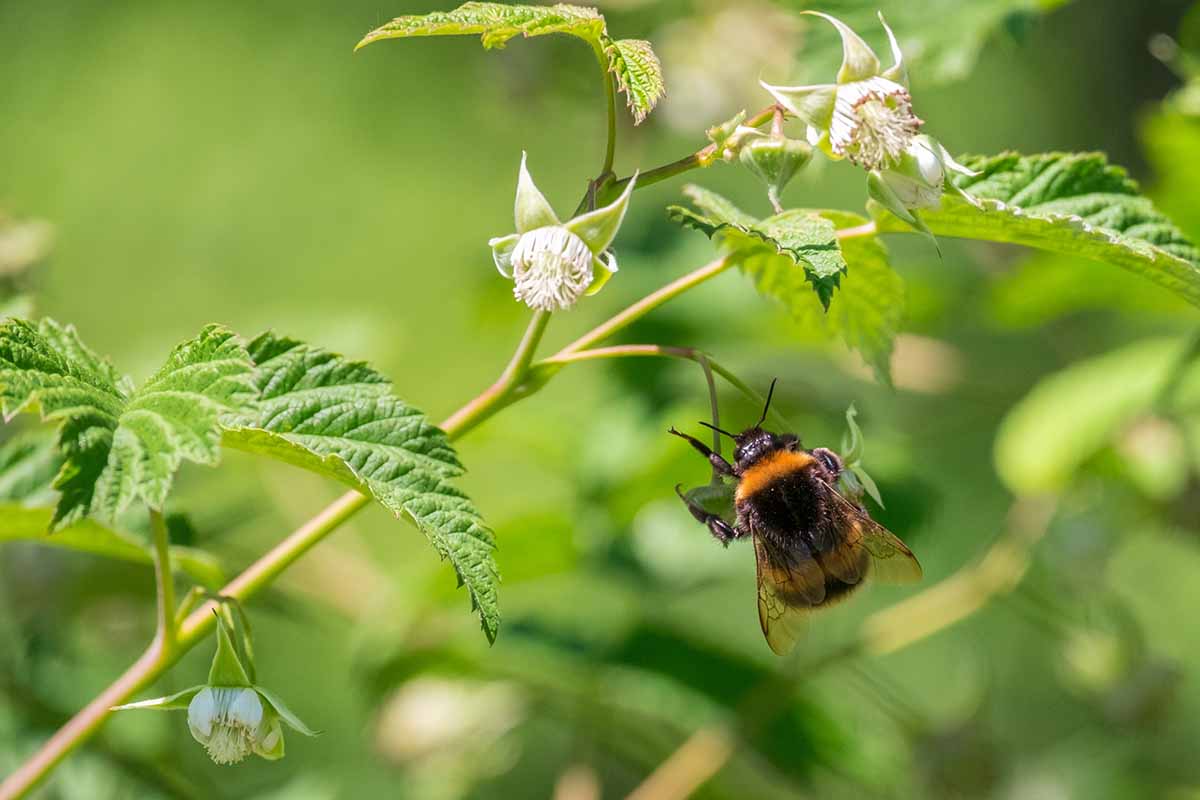
Nursery plant tags detail the average number of days to maturity. As plants near harvest time, the hard green fruits turn black, golden, purple, or red.
Go out early each morning to check for ripeness. This is the best time to pick them, before the heat of the day, when they tend to shrink and soften a bit.
Look for signs of maturity, including bright and uniform color, plumpness, and full size, measuring about one to three centimeters, or a third of an inch to an inch in diameter.
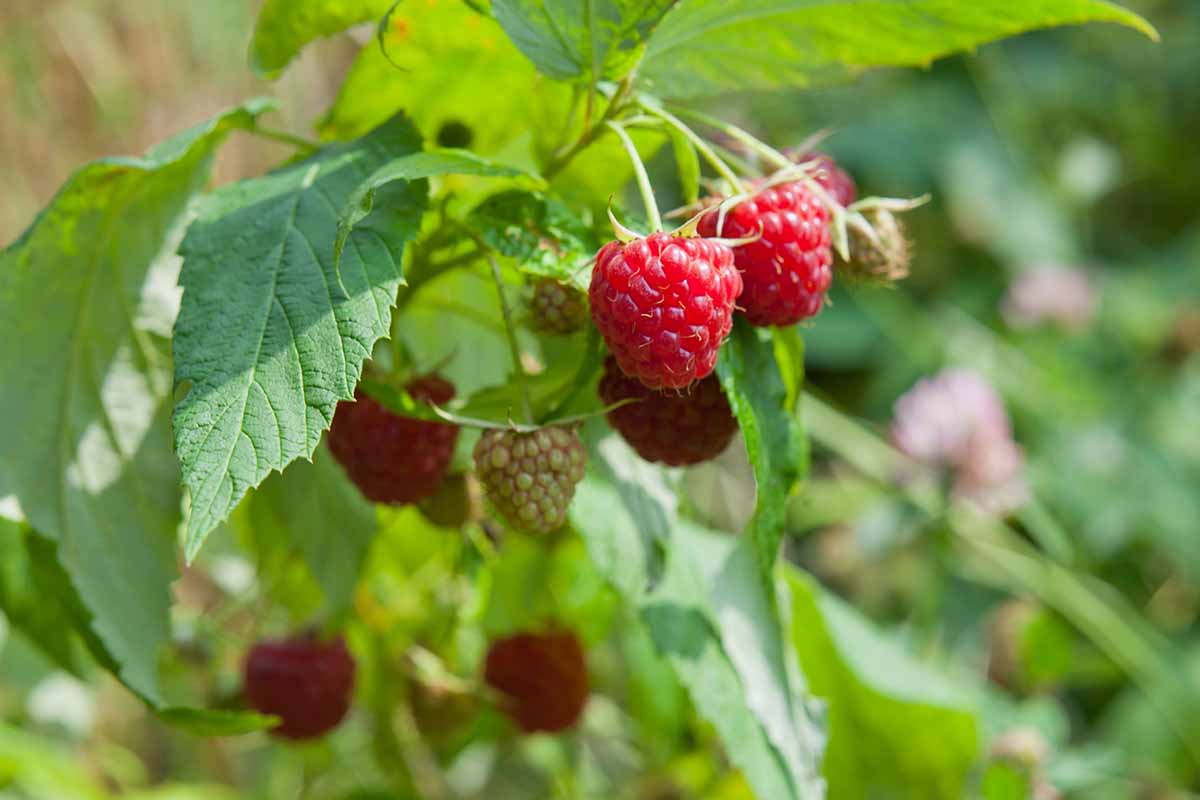
Underripe berries are pale or blotchy, hard, and small.
Overripe fruits are dull, misshapen, deflated, wet, and possibly discolored or moldy.
When you spot a ripe prospect ready for harvest, the guesswork stops here. If it’s time, when you grasp the berry lightly between your thumb and forefinger, it will drop into your hand, leaving the torus behind. If it isn’t ready, it will remain attached.
Be sure to use a light touch, as the fruits squash easily.
As you gather, place the fruits in a single layer to avoid bruising them and releasing the delectable juices. If possible, collect them in the same container you will keep them in.
Consume your harvest immediately, or store it unwashed in the refrigerator for one to two days.
And now, for some sweet treats!
Recipes and Cooking Ideas
These fruits are not only delicious fresh out of hand but in various craveworthy confections, like baked goods and frozen treats. They are a good source of antioxidants and fiber and a positive contribution to a healthy diet.
Our sister site, Foodal, has useful tips on how to get the most out of fresh berries. You might also be enticed to try the following delicious recipes:
Chocolate raspberry cream sandwich cookies are thin and chewy cocoa-rich cookies with a slight crunch, and a rich fruit and cream cheese filling. Find the recipe now on Foodal.

Vegan vanilla raspberry cake with oreos features layers of light, moist vanilla cake, and a fruity dairy-free buttercream and Oreo filling. Directions for making these tasty treats are available from Foodal as well.
And sparkling raspberry lemonade is a thirst-quenching beverage with a honey-mint syrup base that’s cool and refreshing on a hot summer afternoon. Find it on Foodal.
Raspberries Rock
Once picked, raspberries do not continue to ripen, so don’t rush them.

Wait for the signs of readiness we discussed:
- Bright and uniform color
- Plumpness
- Full-size, about a third of an inch to an inch in diameter
Remember to harvest during the cool, early-morning hours for firm, plump fruits that are less likely to bruise.
When ripe and ready, berries detach easily from the torus when grasped between your thumb and forefinger. Use them within two days of harvest for peak flavor and freshness.
Do you grow raspberries? What are your favorites? Please share your responses in the comments section below.
If you found this article informative and want to learn more about berry growing, we recommend the following:
